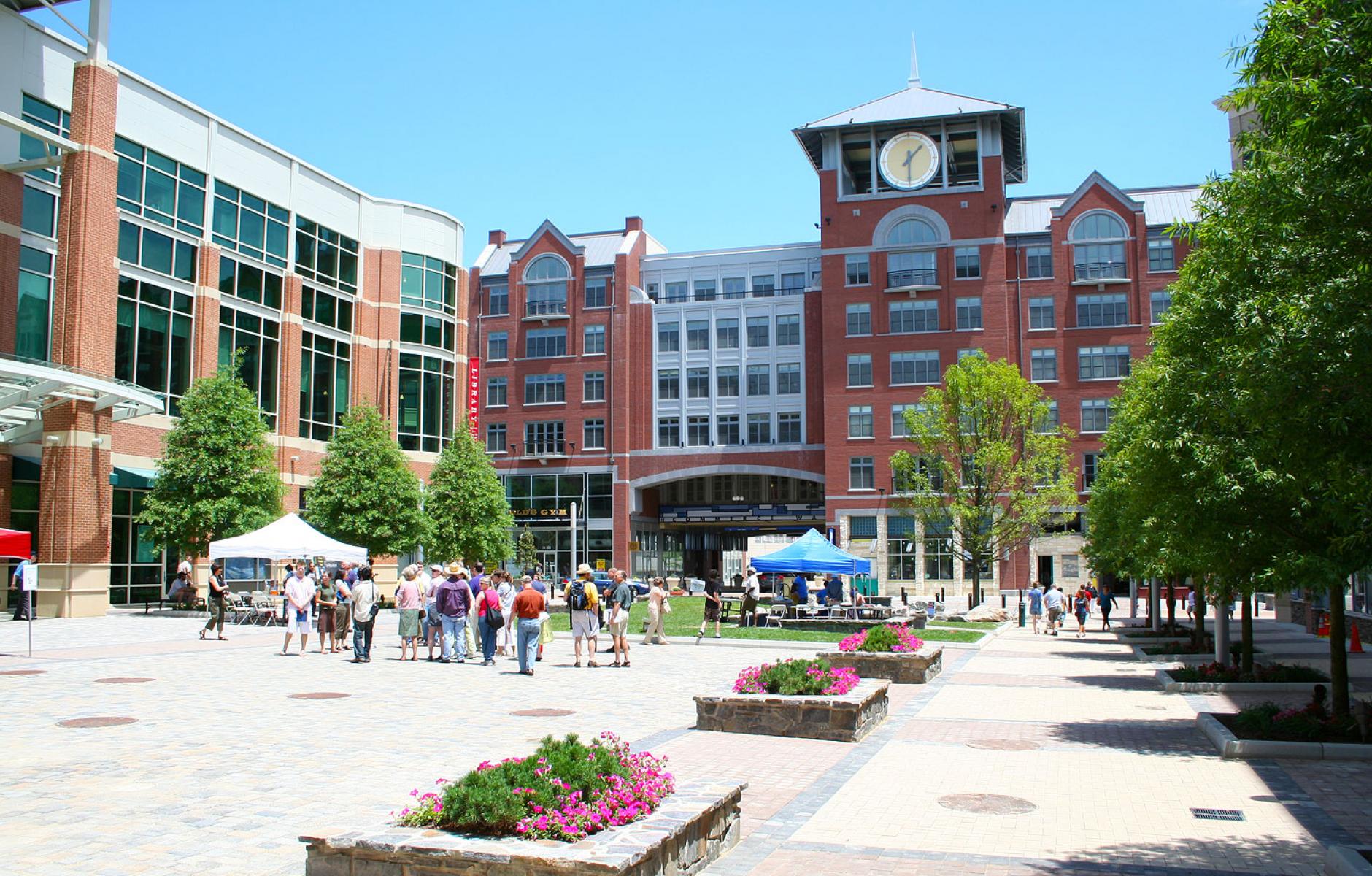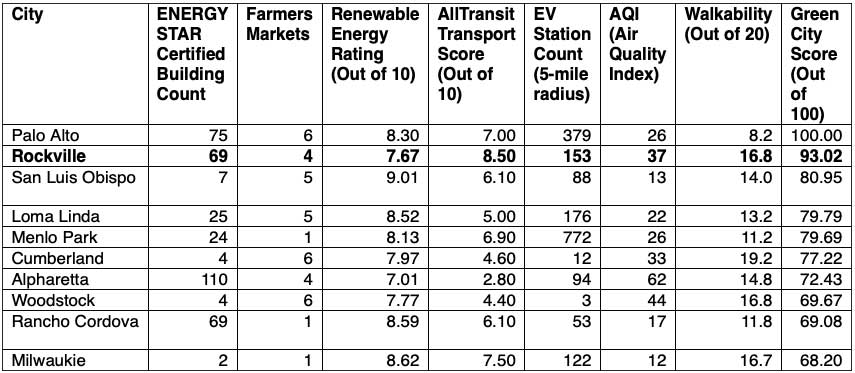
Rockville, a green small city built on transit urbanism
I am skeptical about lists of cities, because the devil is in the details—the metrics determine the rankings. But when I saw that Rockville, Maryland, was ranked as the second greenest small city in the US (under 100,000 population), I looked closely and found substance under the data. The Greenest Small Cities list was put together by Compare the Market Australia, a market research firm down under that is now making lists for the US.
Palo Alto, in Silicon Valley, ranked first, largely due to its high number of electric vehicle charging stations. But Rockville has a much higher walkability score and better access to transit than Palo Alto, and that’s what I focus on. In this case, second best is best—because walkability and transit access are the hardest to achieve and more important, in my view.
Rockville grew as a typical suburb in many respects—one that has transformed through transit access and early adoption of New Urbanism. Although Rockville has a historic district, about 90 percent of the city’s growth was after 1950. The first break from that pattern came when Washington DC Metro built three transit stations in Rockville in the 1970s—and these were all commuter park-and-ride stations with massive parking. This gave Rockville residents a better option of commuting to DC with high-quality, frequent transit service—and also set the city up for big urban design changes in the future.
That came two decades later, starting in the late 1990s, when Rockville participated in transit-oriented development (TOD) plans within walking distance of these stations. The city deserves a great deal of credit on two counts. TOD was by no means common in the 1990s, and so Rockville was an early adopter. Also, the city worked with great planners. That was fortunate for Rockville, and maybe the city was in the right place at the right time.
Street-Works, which planned Bethesda Row in nearby Bethesda, an early new urbanist success, then partnered with Federal Realty Investment Trust on Rockville Town Square. That 15-acre project transformed a former suburban strip mall into what became the heart of Rockville’s downtown, with a great public space, retail and restaurants, and a public library.
Meanwhile, Torti Gallas, a major new urbanist firm based nearby, planned a major traditional neighborhood development adjacent to Rockville’s Shady Grove station, and also planned a town center by the Twinbrook Commons Metro stop.
Due largely to these planning efforts and other new urban plans, the city has grown since 2000 in the form of walkable urbanism. Few other suburban municipalities can make that claim. The city grew by 20,000 in the 2000s and 2010s, gaining nearly 50 percent in population. The pre-existing neighborhoods also benefited from access to TOD—contributing to Rockville’s overall high walkability score. A generation after Rockville began this journey, the green benefits of planning for walkability are clear. Health and social benefits also derive from those changes.
Another city in Maryland, Cumberland, caught my attention as number 6 on the list due to the Appalachian city’s high walkability rating (19.2 out of 20). Woodstock, Illinois, and Milwaukie, Oregon, are also interesting.
Here’s the top 10 list:





